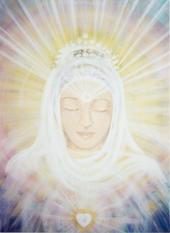I’ve thought about the streetlight effect quite a lot, because the phenomenon of knocking out streetlights happens around me quite a bit. These events are also episodic to a degree, typically clustered around times when I perceive my quantum vibration to be intensely high.
Based on how I feel energetically, I can generally predict whether or not streetlights will go out when I’m near them on a given night. If I’m driving home from an intriguing lecture or have just been involved in a fractalising conversation, or if I’m just thinking, thinking, thinking and making new connections – that’s when I’m more likely to affect streetlights. So it would appear that the streetlight effect is related to increased cognitive synaptic activity.
Simply feeling more energised may well be a sign that we’re primed for increased subtle electric interactions. The mechanism by which this happens is a mystery, but I intuit that our unique vibrational frequency and sensitivity factor in. When I’m surrounded by negatively-charged ions, for instance, I get a mental surge which is likely electrical in nature – and which may also explain my fascination with stormchasing: I’m hungry for the storm’s negative ions.
Another possibility is that spontaneous increases in neurotransmitters like serotonin and DMT may play key roles in working with quantum energetic fluctuations. Terence and Dennis McKenna, in The Invisible Landscape, note that when we’re saturated with certain tryptamines (presumably whether via enhanced endogenous production or an outside source), the resulting electron spin resonance (ESR) of the metabolising tryptamines within our bodies may be “amplified to audible levels,” at which point the sound “…can actually become visible – as if the vibrational wave patterns were shifting into the visible spectrum (italics mine).” Perhaps this speaks to halos depicted around angels and other figures as far back as prehistoric cave paintings.
A phenomenon that may be related to all of this is BOLs – balls of light – and here’s a story to preface why.
One day in the mid-1990s, a time when I was highly energised in general, I was totally enchanted by love for my cat; she was purring so loudly and seemed to be in trance, like me. I was filled with so much love for her at that moment, words can’t describe. Suddenly a bumblebee type of BOL (so described due to its size, its general energetic feel, and even the sound I perceived) came flying at me from across the room – ! I saw it from the corner of my eye and then looked right at it, instinctively ducking as it flew past me, moving my head slightly right.
I actually felt the buzzing energy graze my left eyebrow. Simultaneously I jumped up from the sofa, tossing little Minou’ halfway across the room. Thinking the BOL must have hit the wall behind me and be bumbling around on the floor behind the sofa, I instantly looked for it, but it was gone – or at least it had become invisible.
I’ve always thought the BOL just described was attracted to the force field generated by the strong loving feelings between my cat and me at that moment. Maybe these BOLs are outward manifestations of our own electricity once we’ve attained a certain highly-energised state by one of the methods I’ve described above.
Maybe they’re completely independent beings or disembodied intelligence that manifest on their own when conditions are right. If either case if true, even part of the time, BOLs (visible light or plasma in a “bundled” form of EM) and BOEs (balls of energy in the non-visible part of the EM spectrum) may be drawn into and/or released by our own electromagnetic field.
By extension, whether BOL or BOE, “packets” of excited energy may interact with a streetlight’s sensor or other functional mechanisms, disrupting the lamp’s anticipated operating conditions.
That may sound complicated, but it really boils down this: I theorise that our energy, when vibrating at a high enough state, can produce gravitational effects and “surplus” electromagnetic radiation, whether in the visible spectrum or not, and that this conceivably leads to such phenomena such as BOLs, the streetlight effect, and even synchronicity, as I’ve detailed previously.
STACE TUSSEL
Title Reference: “I Sing the Body Electric;” Walt Whitman.
As often happens, a recent blog posting at Mike Clelland’s site, Hidden Experience, inspired me to write this one. You can read his article here.

